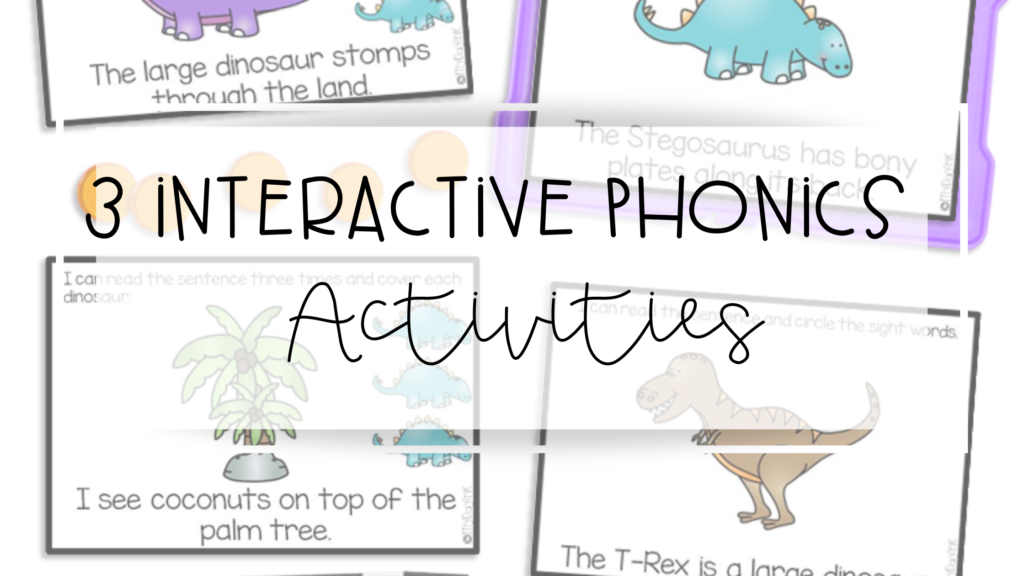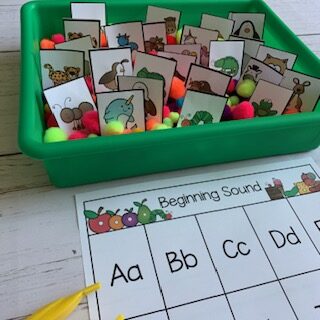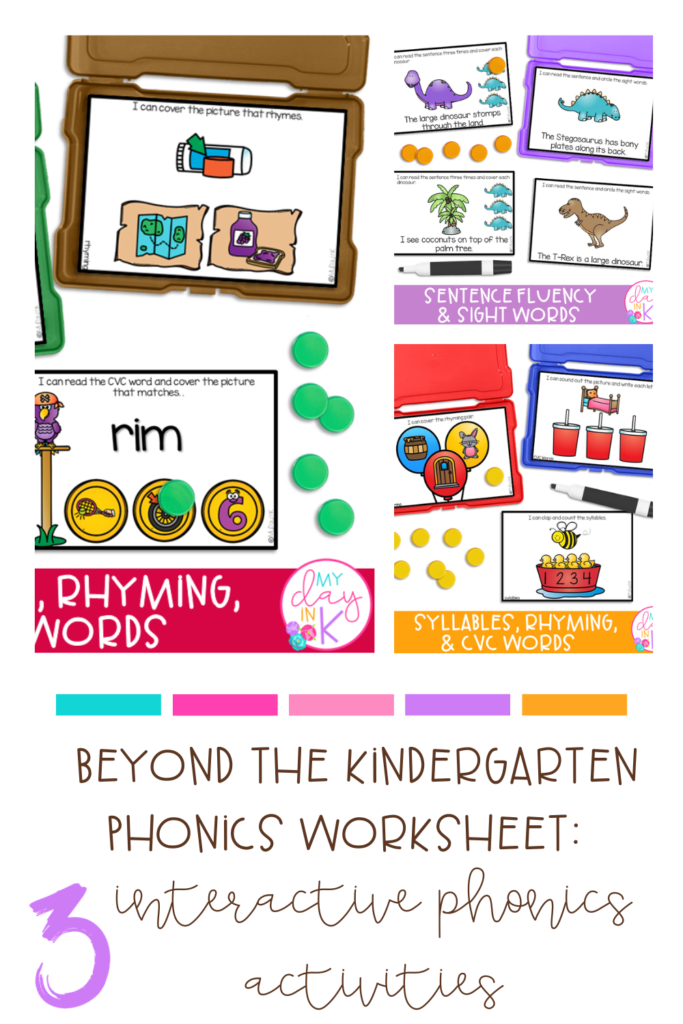From a Kindergarten Phonics Worksheet to Play: 3 Amazingly Exciting Interactive Phonics Activities
The journey of teaching kindergarten students the fundamentals of phonics can be both rewarding and challenging. As teachers, we understand the importance of laying a solid foundation for early literacy skills. There are a variety of engaging phonics activities for your kindergarten class, from a kindergarten phonics worksheet to hands-on sensory bins. You’ll walk away from this blog post with a list of ideas and plenty of resources!

The Importance of Phonics: Building Strong Readers
Phonics serves as the cornerstone for early literacy. It equips young learners with the ability to decode and understand the sounds of letters, laying a solid foundation for reading and spelling skills.

Through phonics, students learn the relationship between letters and their sounds. This connection is crucial for decoding words, helping them transition from recognizing individual letters to reading words and sentences fluently.
Phonics empowers students to break down unfamiliar words, expanding their vocabulary as they become adept at decoding, comprehension improves, setting the stage for a lifelong love of reading.
Why Phonics is Essential for Reading Development
Phonics is the key to unlocking reading fluency. By understanding the sounds of letters and their combinations, students can effortlessly decode words, leading to a smoother reading experience.
Phonics instruction builds spelling skills and instills confidence in students as they tackle familiar and unfamiliar words. This confidence influences their overall approach to language and learning.
When to Implement Phonics Instruction
Phonics instruction should begin early in a child’s education. Introduce foundational concepts in pre-kindergarten, gradually progressing through kindergarten and beyond. Consistency is key to reinforcing these fundamental skills.

Identify the diverse needs of your students and tailor phonics instruction accordingly. Some may benefit from additional practice with short vowel sounds, while others may excel in recognizing consonant blends.
Dive into Phonics Fun: 3 Cool Activities to Make Learning Awesome!
Learning phonics doesn’t have to be boring! We’ve got three super fun activities that will help kids get the hang of letters and sounds. These activities are all about making phonics a blast, so kids can enjoy learning while they play. No more boring stuff – let’s make phonics an adventure for every little learner!
Phonics Task Boxes: A Hands-On Approach to Learning
Phonics task boxes offer a tactile and personalized approach to learning. They engage students in interactive activities, fostering a deeper understanding of phonetic patterns and contributing to the development of essential literacy skills.
These task boxes encourage independent work, allowing students to explore and practice at their own pace. This autonomy builds confidence and a sense of achievement, which is vital for early learners.
Kindergarten Phonics Worksheets: Bridging Learning and Fun
Interactive worksheets infuse an element of fun into phonics lessons. With colorful visuals and engaging activities, they captivate the attention of young minds, making the learning process enjoyable and effective.
A kindergarten phonics worksheet also promotes the development of fine motor skills. As students trace letters and complete activities, they simultaneously enhance their physical dexterity. This isn’t just a fill in the black type worksheet. Making your kindergarten phonics worksheet interactive brings it to a whole new level!
Sensory Bins: A Multi-Sensory Twist to Phonics Learning
Incorporating sensory bins into phonics instruction adds a delightful and effective dimension to the learning experience. Engaging multiple senses, such as touch and sight, enhances the retention of phonetic concepts among young learners.

As students explore the sensory bin, they not only visually identify letters and sounds but also engage their sense of touch. This tactile experience reinforces letter recognition and the connection between sounds and symbols.
Teaching phonics to kindergarten students transcends the immediate goal of decoding words. It paves the way for a lifelong love of reading, building the essential skills required for success in 1st grade and beyond. By incorporating diverse activities, like hands-on task boxes and interactive worksheets, educators play a vital role in shaping confident, capable readers. Early and consistent phonics instruction is the compass that guides students on their literacy journey, ensuring that each child discovers the joy and power of language.



